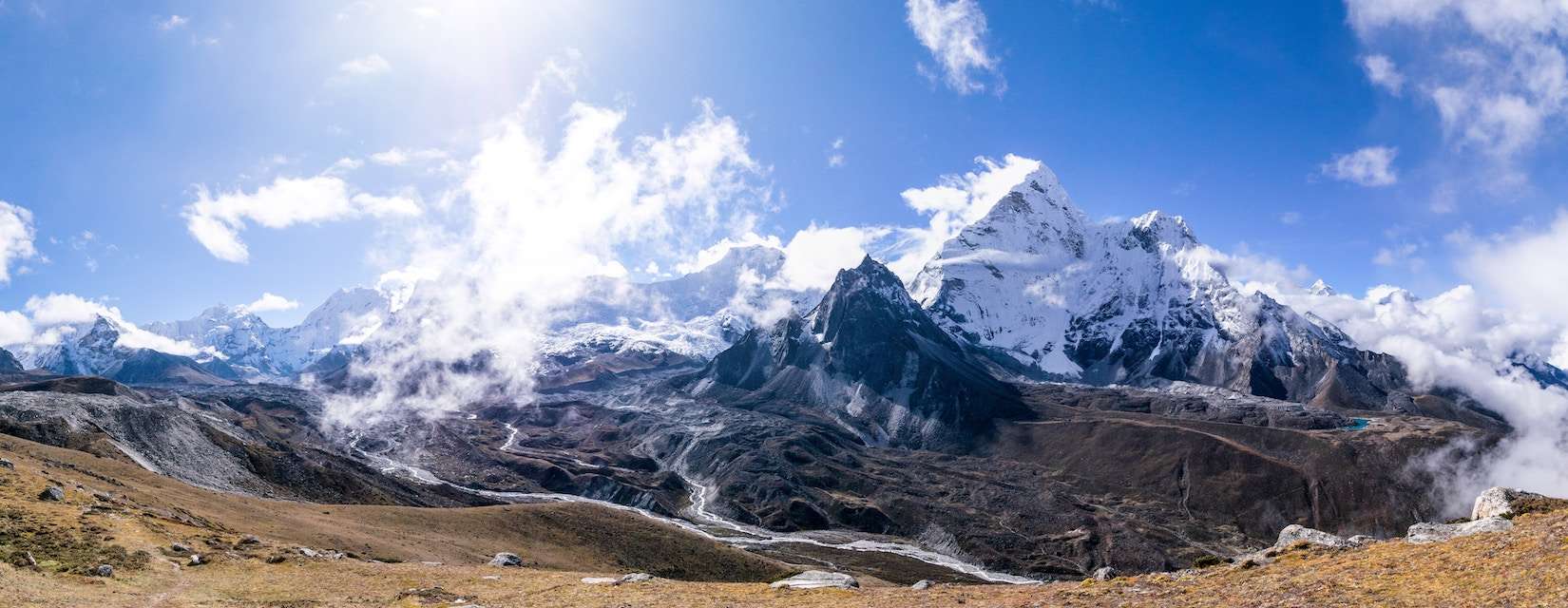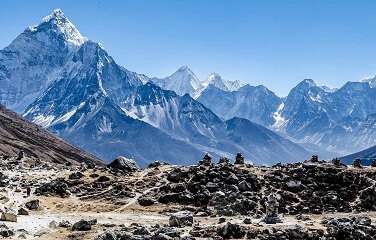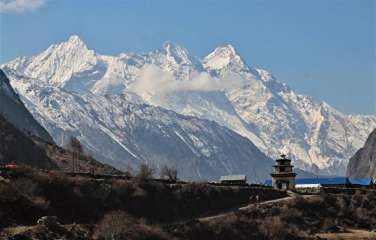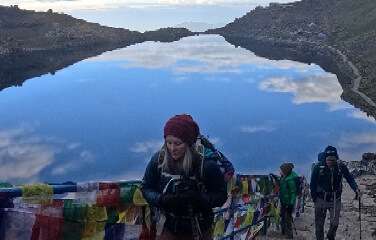Training for Trekking in Nepal

Higher altitude trekking is not like strolling in the park. You must exercise your body and get ready to walk for 8–10 hours each day in all types of weather on steep, difficult terrain while carrying a backpack weighing 8–20 kg.
Most trekking trails in Nepal are rather unlevel. Trekking will take place at both lower and higher elevations. Additionally, you will be walking through sweltering heat and freezing nights.
As a result, training is required for hiking in Nepal. Trekking becomes easier, safer, and more pleasant with preparation. As a result, you should devote more time and energy to training before embarking on a trekking expedition.
Climb slowly
You are constantly at risk for Acute Mountain Sickness when you are at high elevations. The higher elevation's thin air is mostly responsible for this. So, the wisest course of action is to move slowly. You shouldn't climb more than 500 to 700 meters in one day. This equates to a daily hike of about 5 to 6 hours. Your body can adjust to the greater altitude by moving slowly. Make sure to include time in your trip schedule for your body to acclimate to the mountain air.
Nutrition
Do not undervalue the significance of a healthy diet before your walk. You need the right nourishment for all the new labor you are subjecting your body to. Your workout will be powered for the best results by a balanced diet of natural foods and a regular hydration schedule. Your cardiovascular system is a primary target of nutrition. Overeating can cause weight gain and an increase in fat storage, which can squeeze organs and blood vessels and make it harder to get nutrients to all parts of your body.
Altitude Stimulation
If you can, practice in a high-altitude gym or wear a hypoxic mask to replicate high-altitude settings. Your body will adjust better to the lower oxygen levels at high elevations if you do this.
Mental Health
For trekking and climbing at high altitudes, particularly in the Himalayas, physical fitness is a need. Being physically fit is important, but so is being mentally fit. In order to successfully complete a challenging activity, one must constantly put their head before their body. This is especially true for the journey and climb. Being mentally healthy will help you achieve your goal more than anything else because the days will be harder as the elevation increases and you will lose your appetite.
Pick the right season

Every season is fantastic for hiking. There is no set month for trekking because it is up to the individual trekker. Researching the area, weather, and climate conditions before beginning your walk will be useful.
Trekkers who want clear skies and picturesque vistas can visit in the fall, while those who enjoy a fresh atmosphere can go during the monsoon. Winter is for those who enjoy the cold and snow, while spring is for those who enjoy the warmth and long days. Thus, everything depends on what you decide.
2023 best treks in Nepal
Hydrate your body
You should consume more water than usual when you're at a high elevation. Due to decreasing oxygen levels, you start breathing in and out more quickly, which causes you to lose more water through respiration. High elevations cause you to urinate more due to altitude sickness. Increased hydration can aid in your recovery from altitude sickness.
Even your body evaporates water without you recognizing it. You must therefore replenish the fluid in your body by consuming 4-5 liters of water, or more as necessary. Bring a 1-liter water bottle with you to ensure constant hydration.
How Does High Altitude Affect the Body During a Hike?

The body can be greatly impacted by high altitude during a hike since oxygen levels are reduced. The air pressure is lower and less oxygen is available for your body to use at higher heights. Numerous symptoms, such as headaches, nausea, dizziness, shortness of breath, and exhaustion, may result from this. As your body tries to make up for the shortage of oxygen, your heart rate may also rise. Altitude sickness, which can be fatal, can happen in uncommon situations.
What are the Acclimatization strategies for high altitude?
For a safe and enjoyable hiking experience, acclimatization, or the process of adjusting to high-altitude settings, is essential. Increasing your elevation gradually over a few days is one of the best acclimatization techniques. Your body can then acclimate to the lower oxygen levels. Taking rest days to help your body heal and acclimate is another tactic. Additionally, staying hydrated is crucial since it will help your body adapt to the impacts of altitude.
Learn yoga breathing rhythms
At high altitudes, even a little period of exertion may leave you gasping for air. Yoga breathing is a useful technique for regaining control over your breathing. Even just becoming used to taking deep, abdominal breaths in a rhythmic manner can be beneficial. If it does happen, you could feel less worried on the walk if you know how to control it better.
Get used to drinking a large amount of water
No matter what activity you are engaging in, drinking water more regularly than usual is advised when you are at altitude. Higher elevations have lower relative humidity, which causes sweat to escape more quickly and frequently without you noticing. You also lose more water through respiration at lower oxygen levels, sometimes twice as much as you would at sea level. The need to urinate more is another side effect of altitude sickness. All of this means that you should drink significantly more fluids because altitude sickness symptoms might be concealed or made worse by dehydration.
Trek with professionals

High-altitude trekking is something that experienced guides have done for years. They are aware of the hazards and know how to manage them. The guides have more knowledge of the terrain and are highly qualified. Professionals can give you a sense of security by mentally preparing you for difficult terrain and helping you.
Research about the type of food
Treks at high altitudes are quite physically taxing. Along with protein and fat, eating foods high in carbs is good for the body. More calories will fuel additional energy while assisting your body in adjusting to the altitude. Additionally, learn what kind of food is available on the path before you start your hike. Carry nuts and energy bars for on-the-go fuel.
Suitable clothing

When you climb or descend, the weather breaks down properly. It is exceedingly cold in the morning and at night, and just mildly warm throughout the day. To ensure your comfort, be prepared to layer and remove clothing as necessary. Your clothing should be composed of breathable, non-itching materials. A base layer, hiking shirt, hiking pants, a wool jacket, gloves, and many other items are required.
For more information feel free to contact us ([email protected]) or ([email protected]), WhatsApp/ Viber (+977 - 9840396708)





